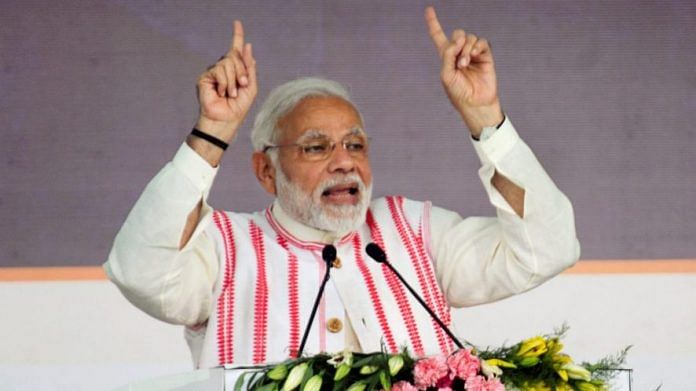New Delhi: While the Modi government is in the process of converting healthcare centres in rural areas into health and wellness centres (HWCs), it has now decided to rank states on the basis of their wellness centres, in a bid to maintain their quality.
The Modi government has envisaged the HWCs as one-stop healthcare centres for rural India through which it can administer its flagship health insurance scheme, Ayushman Bharat or the Pradhan Mantri Jan Arogya Yojana (PM-JAY). Under the scheme, the centres — sub-centres, primary health centres and the community health centres — are being converted into the health and wellness centres.
The government has so far converted around 18,000 healthcare centres into HWCs (as of February 2019) against its target of 1.5 lakh by 2022. It has now decided to maintain a ranking for states to ensure that their quality does not decline.
The new 11-criteria ranking system will be based on the state of infrastructure, patient intake, minimum mandated manpower and efficacy of medical screening, among others.
The wellness centres will be reviewed quarterly, according to the new policy.
The ranking of the rural healthcare centres is critical as not even a single centre in 15 Indian states had met the bare minimum quality standards — set by the Ministry of Health and Family Welfare during a survey in February.
New Health Minister, Dr Harsh Vardhan, also reiterated — while taking charge Monday — that the HWCs are among his top focus areas. “Will ensure that PM-JAY reaches every corner in the country, and try to get more hospitals under its ambit for wider benefits,” the official Twitter handle of the health ministry quoted him as having said. “I will write to the CMs of states which still have to adopt PM-JAY to join this. My focus is also on HWCs under Ayushman Bharat.
.@drharshvardhan : Will ensure that #PMJAY reaches every corner in the country, and try to get more hospitals under its ambit for wider benefits.
I will write to the CMs of States which still have to adopt #PMJAY to join this. My focus is also on #HWCs under #AyushmanBharat. https://t.co/kJ3LXHCCm8— Ministry of Health (@MoHFW_INDIA) June 3, 2019
“Through the Health & Wellness Centers under Ayushman Bharat, we shall promote preventive & promotive health, and enhance awareness about healthy lifestyle,” he added.
How the states be ranked?
The government, while preparations for the Lok Sabha elections were underway across the country, had held a presentation on 8 April to discuss the format of the HWCs’ report card.
The majority of the ranking points, 25 per cent of them, will be awarded for a state’s efforts in upgrading sub-centres and primary health centres to HWCs.
A further 20 per cent has been set aside for training of staff, the building of infrastructure and availability of medicines and diagnostics. It will also include the robustness of the HWC to conduct teleconsultation, aggressiveness in providing wellness activities such as yoga and performance-based payment of their chief health officer.
Around 15 per cent is set aside for states that successfully enumerate the larger number of the population into the scheme as against the total population of the area.
The smaller components, weighing 5 per cent, have been set aside for the states’ ability to get their HWCs to cover pregnant women undergoing pre-birth checkups, number of institutional deliveries and number of children who have received full immunisation among others.
The government has also decided to weigh these centres on the basis of their screening drives. For instance, the number of individuals over 30 years screened for hypertension, diabetes, oral cancer and breast cancer at the HWCs would earn the states more points.
Why the move is important?
According to findings by the Centre for Policy Research (CPR), a New Delhi-based think-tank, which collated government data, much of the three-tier healthcare system — of sub-centres, primary health centres and community health centres — does not conform to the Indian Public Health Standards (IPHS) set by the health ministry.
ThePrint had earlier reported that out of the 1.58 lakh sub-centres, only 11,000 centres (a mere 6 per cent) met IPHS norms. Similarly, of the 25,700 primary health centres, only 3,000 (12 per cent) adhered to the norms while in case of community health centres, only 728 of the 5,600 follow basic standards.
Also read: Modi govt plans to bring 75% of all Indians under Ayushman Bharat



